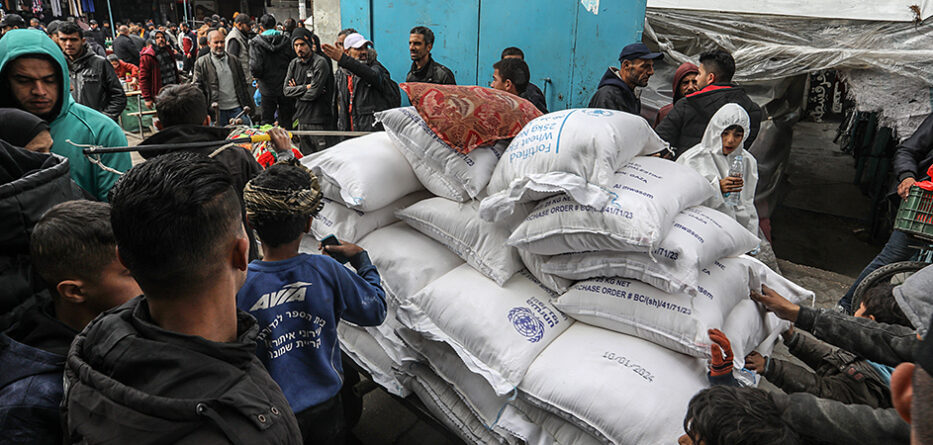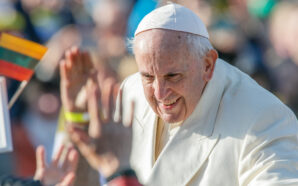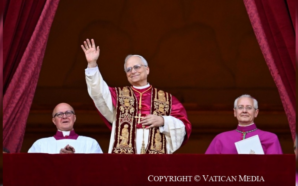Tomorrow marks the beginning of Holy Week with Palm Sunday, the day of triumphant entry into Jerusalem by Jesus. It will initiate a series of dramatic re-enactments and representations of his last days, carrying the believer through the Last Supper, his agony in the Garden of Gethsemane, his arrest, trial, torture and then public execution on Golgotha. This is followed by the deposition from the cross, the entombment, the “harrowing of hell,” all culminating with the empty sepulchre.
This holy recounting of the Paschal Mystery – the passion, death and resurrection of Jesus – is the liturgical highlight of the Christian year concentrated in three days, in the Catholic tradition termed the triduum: Holy Thursday, Good Friday and Holy Saturday/Easter Vigil.
It is a time of the most resplendent of liturgies, the holiest days of the Christian calendar, a time of deep communal prayer, ritual sorrow culminating with the unsurpassable joy of the risen Jesus.
This sacred narrative is centred in Jerusalem, which translated means “city of peace or search for peace,” or as Rabbi Tamar Elad-Appelbaum notes of Jerusalem: “it is a teacher of assembling, a teacher of cure and healing, put at the gates of Eden, to remind us that they only open if we assemble together.” This holy city – sacred to all three Abrahamic faiths, Judaism, Christianity and Islam – has rarely known such assembly, riven as it has been by conquest, suppression, displacement and slaughter. The current iteration is the latest in a sad litany of political and religious turmoil that racks the Holy Land, although arguably the most brutal.
It has also been roiled by jurisdictional squabbles in the-not-so distant past among the various Christian entities that have a say over the custody of the holy places – the Church of the Holy Sepulchre, in particular – with many Patriarchs from different Christian denominations claiming oversight.
But it is, in fact, the current mad rampage engulfing Gaza and Israel in this latest and most deadly danse macabre that poses special challenges for Christians. The Holy Land, and Jerusalem in particular, feels under siege, with them as a beleaguered minority.
For many in the Holy Land, Christians are a residual reminder of the old days of Crusader triumph, and more recently of the European imperial sovereignties which, following the dismemberment of the Ottoman Empire after the First World War, created a new world of regional dislocation.
The Christians remain, however, an ancient and essential presence and this year’s Holy Week ceremonies – in Jerusalem, in Rome and throughout the Christian communities worldwide – will be overshadowed by the mindless carnage that has so radically restricted their lives.
Pilgrims are a disappearing act; public rites will be performed under tight security constraints if at all; peaceful co-existence is under the greatest threat in a half-century.
I remember an occasion when as a board member of the Canadian Friends/Les Amis de I’École biblique et archéologique française de Jérusalem, we were taken along the Via Dolorosa, the Way of Sorrow, that is reputed to be the road on which Jesus trod bearing his cross to his crucifixion, with one security officer, gun unholstered, in front of us, and another officer bringing up the rear. Although this happened at the very end of the Second Intifada in 2005, the menace and the threat of violence remained ubiquitous.
It was also during this trip that I tasted firsthand the economic suffocation and constrained reality of Palestinians living in Bethlehem, as we had to cross through a wall constructed by the Israeli government to curtail the activities of suicide bombers, a not unreasonable security measure in itself, but nonetheless a wall that bifurcated the land.
Getting access to the town of Christ’s birth and to the iconic Church of the Nativity was a herculean task and when we did get access, the town was empty, its merchants desperate, its clergy inactive, its young and unemployed inhabitants restive.
For Christian pilgrims and scholars, the ready availability of the holy sites – archeological, cultural and devotional – is the sine qua non of a successful pilgrimage or research undertaking. But a war zone, whether muted as it was when I was there, or in full throttle as it is now, displaces every priority, ransacks our collective conscience, and makes people of faith cringe with horror in the face of the formidable resistance to compromise, to mutual respect, to peace on both warring sides.
Not that efforts, political and ecclesiastical, to mediate for a resolution to the current spate of savagery have been lacking. They have been simply aborted from the outset.
The Latin Rite Patriarch of Jerusalem, Cardinal Pierbattista Pizzaballa, offered himself in exchange for the Israeli children held hostage by Hamas and exhorted all Israelis and Gazans “to have the courage of love and peace here, today, which means not allowing hatred, revenge, anger and pain to occupy all the spaces of our hearts, of our speech, of our thinking.”
The Patriarch’s words have fallen on deaf ears because few can hear in the babel of fury. But Cardinal Pizzaballa’s own boss, Pope Francis, is nothing if not an agent of hope in a dark landscape.
Repeatedly calling for the cessation of the conflict, the creation of an “immediate and lengthy ceasefire,” and the release of the hostages and prisoners, Pope Francis has inserted himself directly into the political quagmire by trying to insinuate his Secretary of State, Cardinal Pietro Parolin, into whatever political mediating process there is. But Israel has formally rebuked Cardinal Parolin for remarks he made calling Israel’s response disproportionate, accusing the Vatican of using a discourse that betrayed “linguistic ambiguities and terms that allude to a false symmetry.” So that door is closed.
Francis remains convinced that we “are experiencing a third world war fought piecemeal” and that the only way out of this spiral of despair and violence is to give birth to “a great new chapter of history.” What better place to start that in the Holy Land for that is where the first Easter occurred, ground zero for the Christian faith.
Holy Week is the consummation of the Christian liturgical year and although celebrated universally its original locus, Jerusalem, remains foundational to understanding the final days and salvific role that the faithful see in the life, ministry, death and resurrection of Jesus, the Anointed One.
Father David Neuhaus, a Jesuit political scientist who has lived the majority of his life with Palestinians as an Israeli citizen, insists that the role of the Christian remnant must continue to “uproot the weeds of racist discourse, whether directed at Jews or Muslims, Arabs or Israelis.” Both they and the Christian community at large must create “a language about, and a vision of, the Holy Land in which peace based on justice is not just a rhetorical device, but a real possibility.”
In doing so, the followers of Jesus can serve as a bridge to peace in the land of the Prince of Peace.
Dr. Michael W. Higgins has been involved with investigating and expanding the Catholic Intellectual Tradition, particularly in Canada, for over forty years. Dr. Higgins is the Basilian Distinguished Fellow of Contemporary Catholic Thought at the University of St. Michael’s College in Toronto.
This blog was published in The Globe and Mail on March 23, 2024.
With thanks to Pontifex Minimus.
Pontifex Minimus is written on the ancestral territories of the Haudenosaunee, Anishinabewaki, Attiwonderonk and Mississaugas of the Credit First Nation peoples, who have stewarded these lands since time immemorial.








